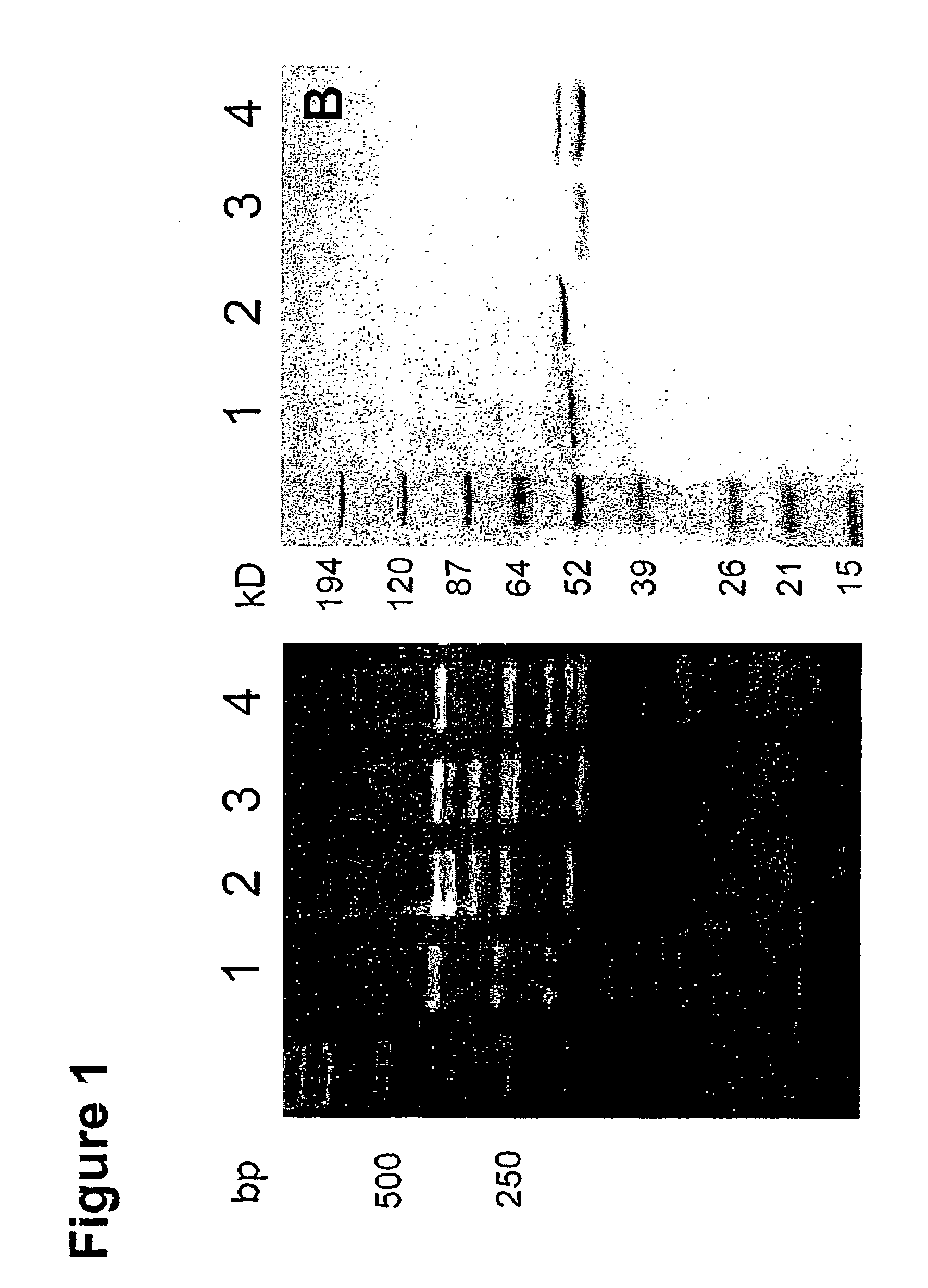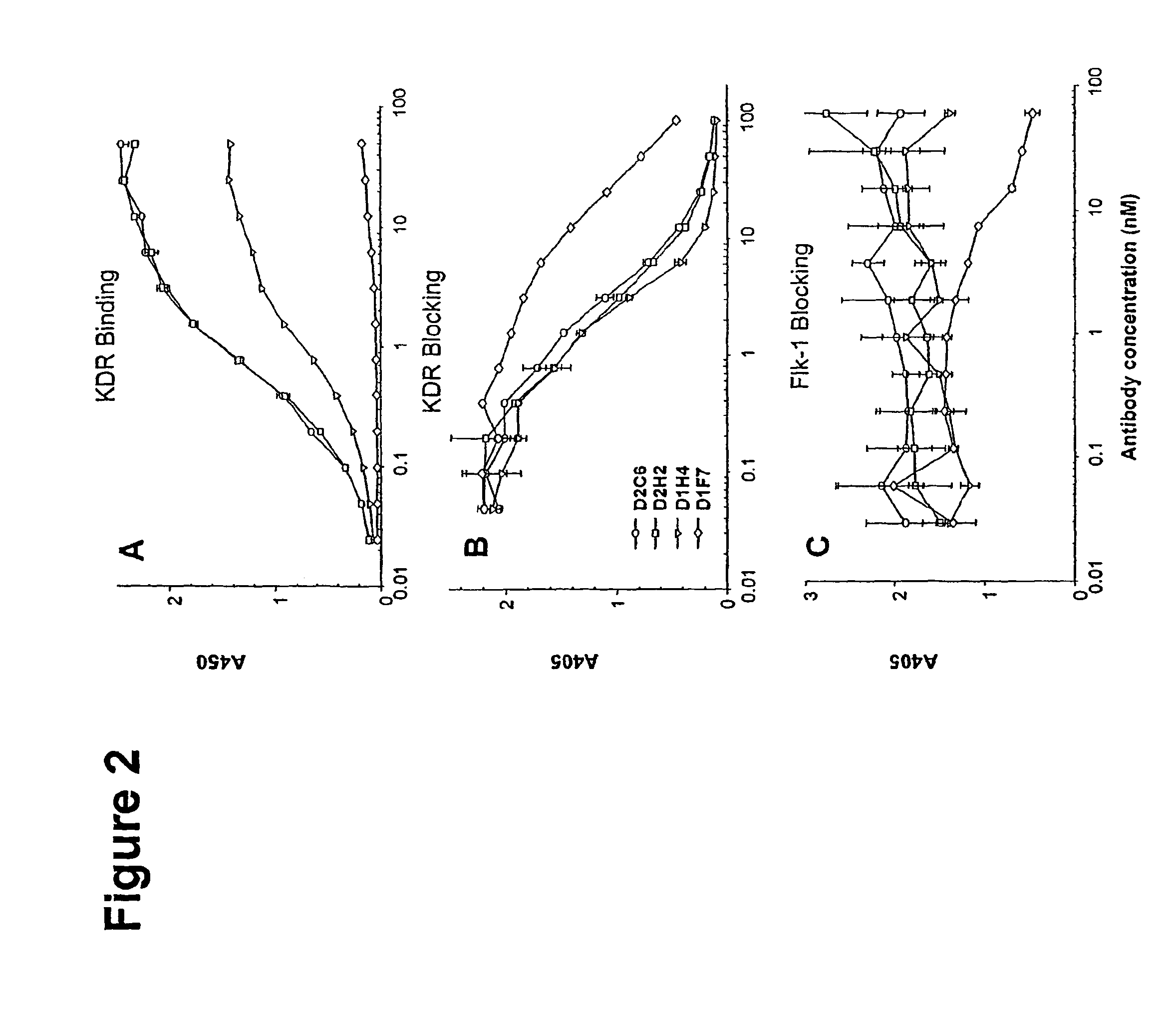Human antibodies specific to KDR and uses thereof
a technology of human antibodies and kdr, applied in the field of human antibodies, can solve the problems of collapsing blood vessels, often quite rapidly, and achieve the effect of improving the quality of life and reducing the risk of infection
- Summary
- Abstract
- Description
- Claims
- Application Information
AI Technical Summary
Benefits of technology
Problems solved by technology
Method used
Image
Examples
examples
[0094]The Examples which follow are set forth to aid in understanding the invention but are not intended to, and should not be construed to, limit its scope in any way. The Examples do not include detailed descriptions of conventional methods, such as those employed in the construction of vectors and plasmids, the insertion of genes encoding polypeptides into such vectors and plasmids, or the introduction of plasmids into host cells. Such methods are well known to those of ordinary skill in the art and are described in numerous publications including Sambrook, J., and Russell, D. W. (2001) Molecular Cloning: A Laboratory Manual, 3rd edition, Cold Spring Harbor Laboratory Press.
example i
Production of Human Fab
Example I(a)
Proteins and Cell Lines
[0095]Primary-cultured HUVEC were obtained from Dr. S. Rafii at Cornell Medical Center, New York, and maintained in EBM-2 medium (Clonetics, Walkersville, Md.) at 37° C., 5%. CO2. The soluble fusion proteins, KDR-alkaline phosphatase (AP), its immunoglobulin (Ig) domain-deletion variants, and Flk-1-AP, were expressed in stably transfected NIH 3T3 and purified from cell culture supernatants by affinity chromatography using immobilized monoclonal antibody to AP as described by Lu et al., J. Biol. Chem. 275: 14321-30 (2000). VEGF165 protein was expressed in baculovirus and purified following the procedures described in Zhu et al., Cancer Res. 58: 3209-14 (1998). The leukemia cell lines, HL60 and HEL, were maintained in RPMI containing 10% fetal calf serum.
Example I(b)
Phage ELISA
[0096]Individual TG1 clones were picked and grown at 37° C. in 96 well plates and rescued with M13K07 helper phage as described above. The amplified phag...
example i (
Example I(e)
Selection of Human Anti-KDR Fab from Phage Display Library
[0099]A large human Fab phage display library containing 3.7×1010 clones (DeHaard et al., J. Biol. Chem. 274: 18218-30 (1999)) was used for the selection. The library consists of PCR-amplified antibody variable light chain genes and variable heavy chain genes fused to human constant light chain genes (κ and λ) and DNA encoding the IgG1 heavy chain CH1 domain, respectively. Both heavy and light chain constructs are preceded by a signal sequence—pelB for the light chain and gene III signal sequence for the heavy chain. Heavy chain constructs further encode a portion of the gene III protein for phage display, a hexahistidine tag, and an 11 amino-acid-long c-myc tag, followed by an amber codon (TAG). The hexahistidine and c-myc tags can be used for purification or detection. The amber codon allows for phage display using suppressor hosts (such as TG1 cells) or production of Fab fragments in soluble form when transform...
PUM
| Property | Measurement | Unit |
|---|---|---|
| concentration | aaaaa | aaaaa |
| angle | aaaaa | aaaaa |
| pH | aaaaa | aaaaa |
Abstract
Description
Claims
Application Information
 Login to View More
Login to View More - R&D
- Intellectual Property
- Life Sciences
- Materials
- Tech Scout
- Unparalleled Data Quality
- Higher Quality Content
- 60% Fewer Hallucinations
Browse by: Latest US Patents, China's latest patents, Technical Efficacy Thesaurus, Application Domain, Technology Topic, Popular Technical Reports.
© 2025 PatSnap. All rights reserved.Legal|Privacy policy|Modern Slavery Act Transparency Statement|Sitemap|About US| Contact US: help@patsnap.com



